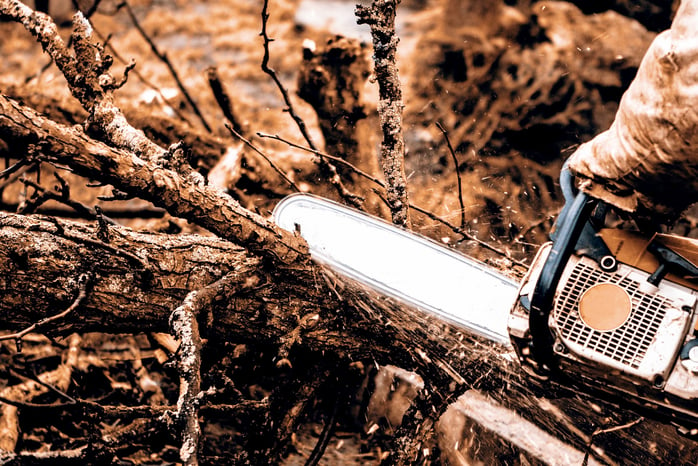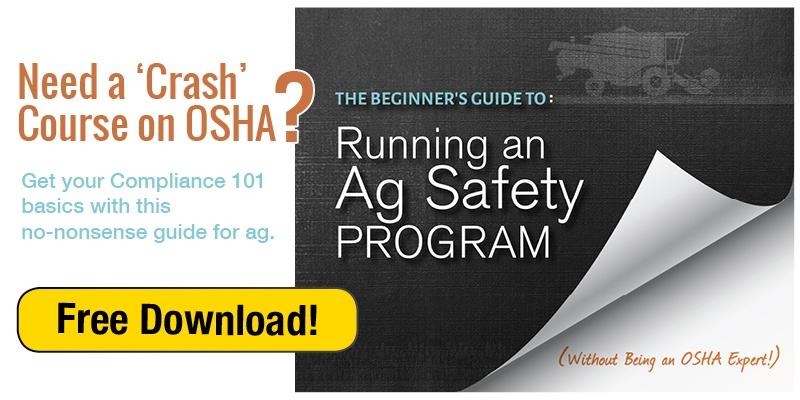Whether cutting firewood, downing trees for lumber, clearing brush or removing storm-damaged trees and branches, chainsaws are designed to make the job faster and easier. They're one of the most powerful hand tools at your disposal . . .
And one of the most dangerous.
Everyday, injuries occur as a result of unsafe chainsaw operation at home and at work.
The average chain saw accident requires 110 stitches*, and the average cost of a stitch in the US is $500.00, so the average chain saw accident costs $55,000—and that’s just to put the person back together. It doesn’t include the cost of rehab, lost work, increased insurance premiums, etc.

Here are this week's Farm-Safety Tips:
How to help you and your farm employees operate a chainsaw safely—
- Read your equipment's safety materials: As detailed in your operator's manual, familiarize yourself with your saw's components, noting all the safety features.
- Protect your body: Equip yourself with appropriate protective gear, including a hardhat or helmet, safety eyewear, protective ear wear, gloves, chaps and boots.
- Survey your surroundings: Clear your cutting area of such hazards as combustibles and other trees or obstructions that could get in your way.
- Understand reactive forces: As you use your chainsaw, recognize kickback, pushback, pull-in, as well as sawing techniques to prevent them.
- Use the right cutting techniques for the right situations: As well as the proper techniques for felling, limbing and bucking, be mindful that each comes with its own set of dangers.
- Use caution, and avoid common pitfalls: A lot of caution and a little bit of common sense can go a long way. Play it safe. You only have one body, so take care of it while sawing.
While these are the most basic tips on chainsaw safety, there’s much more information to learn that can help you keep safe when using chainsaws. It includes safety requirements for gasoline-powered chainsaws, recognizing other dangerous chainsaw safety hazards and gaining a deeper understanding of felling, limbing and bucking.
*Source: http://www.elvex.com/facts08.htm 


